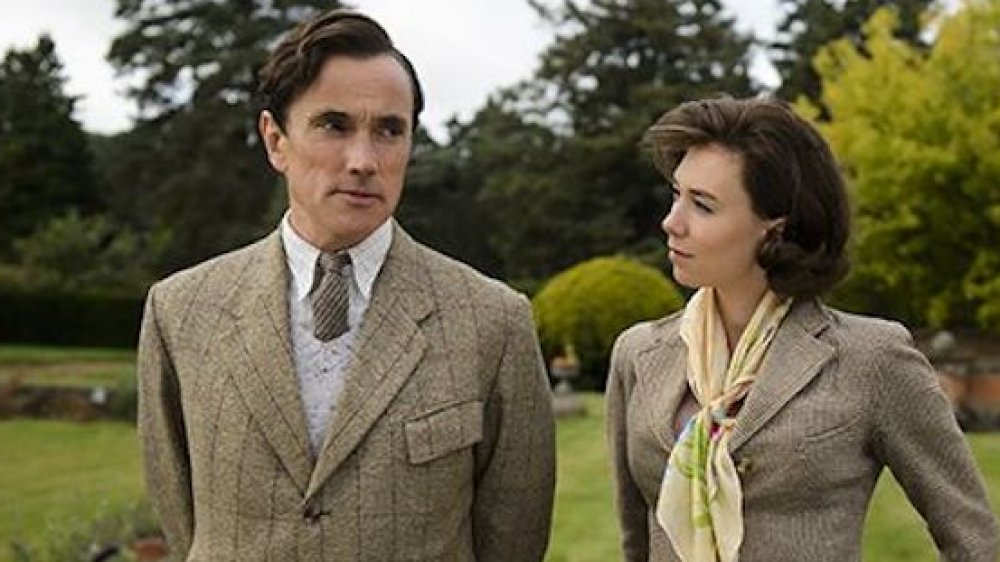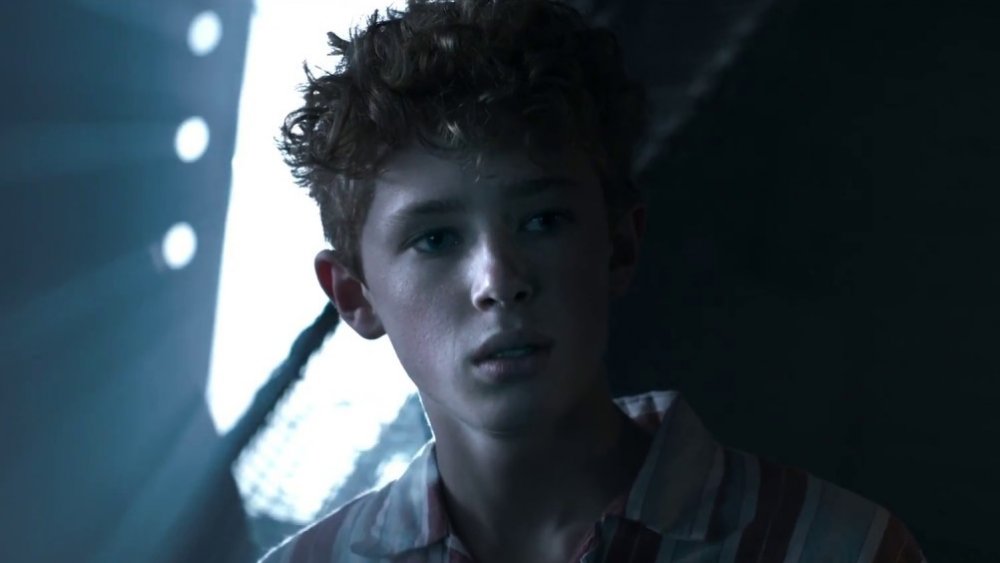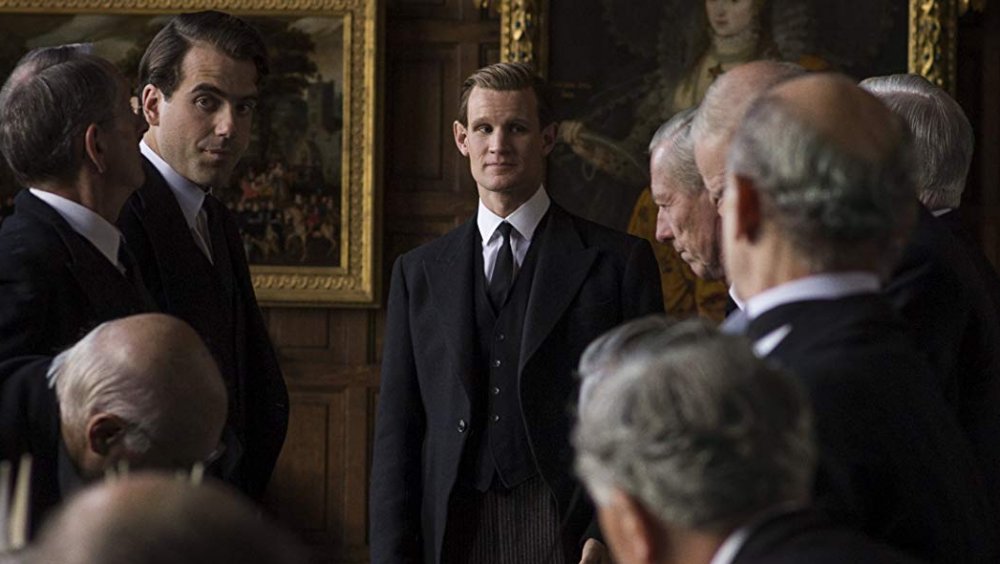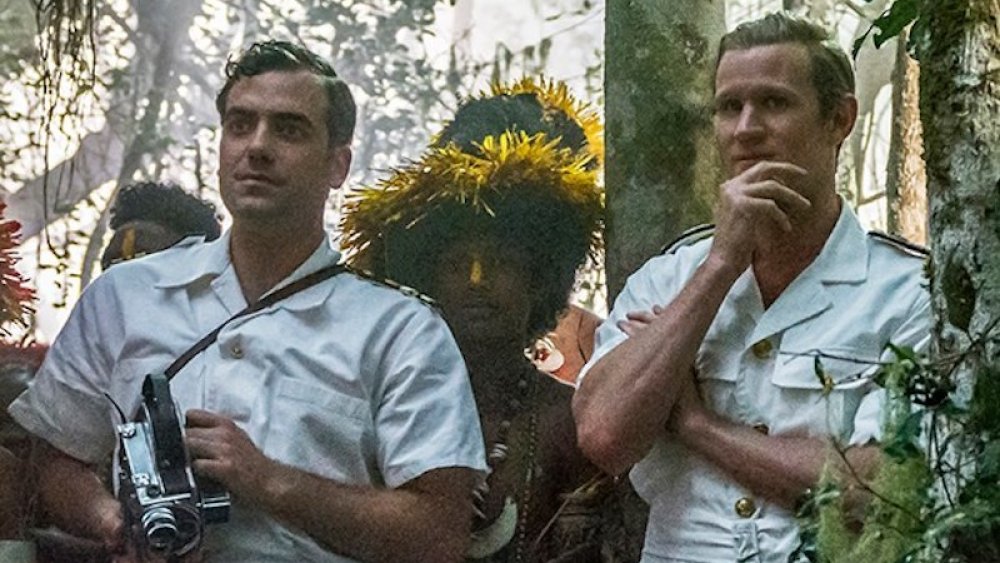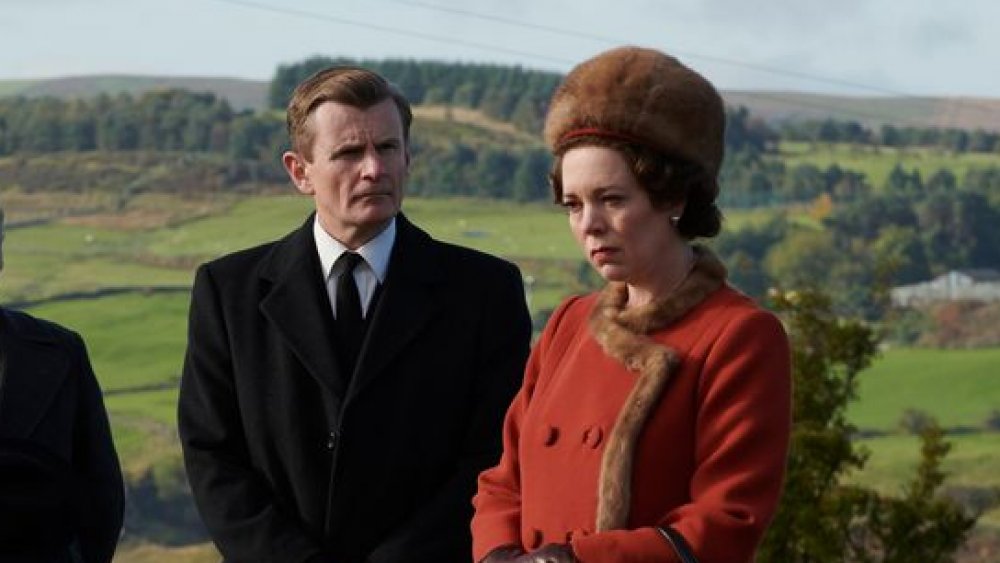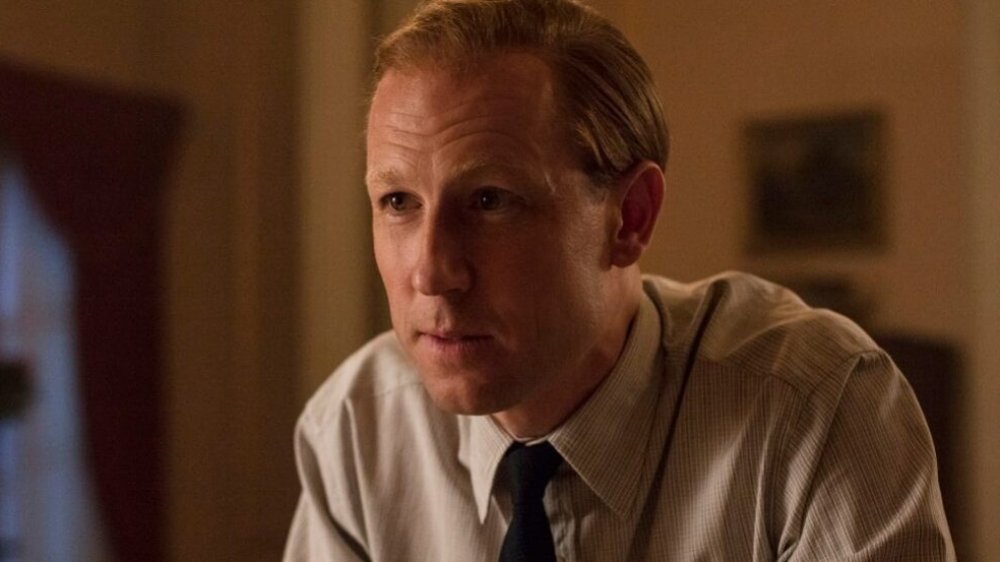What The Crown Gets Wrong About History
While TV — particularly British TV and PBS — has given the world plenty of narrative series and documentaries about the royal family of the United Kingdom, Netflix's The Crown is truly ambitious in scope. The show will last for six seasons and 60 episodes, spanning the entire public life of Queen Elizabeth II (Claire Foy, then Olivia Colman) the longest-serving monarch in British history. Not only is The Crown exhaustive and well-made (at a cost of $100 million), but its crew takes pains to make it as accurate as possible. Mid-century Britain has been recreated in stunning detail, while the cast is updated every so often to account for the aging of its subject, the Queen, along with Prince Philip, Prince Charles, Prince Andrew, and the other well-known royals and world-shaping English politicians.
That said, plot points are also dramatized or invented out of thin air to account for what we just don't know about what goes on behind closed doors at Buckingham Palace, or to move the plot along and to tell a concise, precise story. Here are some of the ways that the historically dense The Crown wasn't historically correct.
Prince Philip kneeled without a fuss
The Crown deftly and cleverly explores both the professional and personal life of Queen Elizabeth II, and probably the most interesting moments come when those two parts intersect ... and battle for supremacy. Queen Elizabeth II takes the throne in the early 1950s, the dark ages as far as gender equality in marriage is concerned. It was a commonly held notion that a man was the "master" of his home, outranking his wife ... but what if that man's wife was the queen of England, the sovereign over tens of millions of people, including him, also a royal by birth? The Crown presented this conundrum, and it's a difficult one for Prince Philip to reconcile.
After she puts him in charge of preparations for her 1953 coronation, Philip lets this shred of power go to his head, or really his male ego, and he mentions how he doesn't think he should have to bow to the Queen — his wife — when she's officially crowned the ruler of his nation. Writer Peter Morgan didn't take this episode from historical records, but rather created it to explore the gender politics of the 1950s. According to royal family resource Christopher Wilson (in Marie Claire), Philip had no problem with taking a knee. "He came from a royal household which had borrowed so much of its ritual and protocol from the British Royal Family. He knew full well what was expected of him in public, and was prepared to go along with it."
Nobody knows why Queen Elizabeth and Prince Philip fought in front of reporters
While usually a highbrow historical drama, The Crown does get a bit soapy, such as in the first season episode "Pride & Joy." Set in 1954, Elizabeth and Philip tour the Commonwealth, which includes a stop in Australia. According to The Crown historical advisor and royal biographer Robert Lacey, one day the Queen and her husband were all set to walk out onto the veranda of the house where they were staying to pose for some photos with koalas, but instead Philip came out alone ... and then came the tennis racquet, a pair of sneakers, and a very angry Elizabeth in pursuit, screaming at him. When they realized they had an audience — who were recording the whole thing — the royal couple retreated back inside. Elizabeth emerged a few minutes later and apologized, saying that the occasional fight "happens in every marriage." As a sign of respect, the reporter who recorded the fight destroyed the footage, a moment depicted in The Crown.
While the fight was real and witnessed by many, the reasons behind that fight — which went down inside — were never divulged. That meant The Crown writer Peter Morgan had to come up with one. On-screen, Philip gets Elizabeth mad by insulting both Australia and her deceased father: "I bet that's why your father smoked so many cigarettes," he says, "thinking that he'd rather have cancer than come on this bloody tour of Australia."
The Smog of '52 killed many, but not Venetia Scott
It's one of the most absurd moments in the first season of The Crown, as well as one of the most absurd moments in 20th century history. As depicted in the episode "Act of God," a thick, impenetrable smog darkened London in 1952. Countless residents couldn't see where they were going — or walking — sending thousands to both the hospital and the undertaker. The usually very controlling and take-charge U.K. prime minister Winston Churchill remains shockingly indifferent to the plight of his countrymen, calling the smog the titular "act of God," which prompts calls for his resignation.
Churchill finally begins to take things seriously when his beloved assistant, a young woman named Venetia Scott (Kate Phillips), is struck dead by a bus whose driver couldn't see her in the smog. A heartbroken Churchill then delivers a speech, promising England that he will do his best to prevent another smog-related tragedy.
While the Smog was real, the character of Venetia Scott was made up by The Crown writer Peter Morgan — but she represents a lot. "She's an amalgam of Churchill's secretaries; five or six of them wrote memoirs, so it's based on them," historical advisor Robert Lacey told The Daily Beast. "And she also serves as a symbol for the 6,000 or so people who died that month," whose deaths led to the U.K. passing a clean air act in 1955.
The Queen didn't know about Churchill's stroke
Historical dramas can enjoy the benefit of, well, history. In making a TV series about real events decades after they occur, scriptwriters can tell a full story with details that may emerge far after contemporary accounts. This is the method The Crown writer Peter Morgan took to weave the first season episode "Scientia Potentia Est."
In the wake of the Soviet Union testing nuclear weapons in 1953, and the subsequent scramble to meet with U.S. president Dwight Eisenhower, U.K. prime minister Winston Churchill (John Lithgow) suffers a stroke. His ally and head of Parliament's House of Lords, Lord Salisbury, works with the PM to keep this secret from both the Queen and country, so as to secure Churchill's status and power. Elizabeth learns of the stroke when Churchill's private secretary Jock Colville comes clean, prompting the Queen to rip the PM to shreds over his conspiring.
RadioTimes says this dressing down never happened, nor could it have ever happened, because Churchill was long dead by the time the Queen found out about the stroke. She heard about Churchill's ailment when the world did — in 1985, when Colville revealed the truth in his memoirs.
Clementine Churchill didn't burn that portrait of her husband
Late in the first season of The Crown — and in his long career as a statesman — Winston Churchill sits for a grand portrait, commissioned by Parliament as a one-of-a-kind 80th birthday gift for the man who deftly guided the country through World War II. Contemporary — meaning modern, and slightly experimental — painter Graham Sutherland lands the gig. The portrait is thus publicly unveiled in 1954, and The Crown suggests that this is the first time Churchill sees it — judging by his almost visceral reaction of disgust and disappointment. While he questions Sutherland's intentions and talents, he later accepts the not-flattering painting as truthful, and that he is an old, tired man who should (and does) resign his powerful post.
While that painting was supposed to wind up hanging in Parliament, it doesn't make it — Churchill's wife, Clementine (Harriet Walter), quietly has it unceremoniously burned in their backyard. That's not the full story of the ill-fated Churchill portrait. According to RadioTimes, the Churchills likely saw the painting prior to its public debut. Nor did they immediately destroy it in a fire. Clementine Churchill told her secretary, Grace Hamblin to dispose of it, according to biographer Sonia Purnell. Hamblin and her brother removed it from the Churchills' basement in the middle of the night, put it in a van, drove to the brother's house ... and burned it there.
The Queen tried to make Princess Margaret's marriage happen
The Crown wouldn't exist as a show about Queen Elizabeth II had she not ascend to the throne after the death of her father ... who never would've been king had his brother, King Edward VIII, not abdicated the throne so he could marry Wallis Simpson, a twice-divorced American commoner.
That story of choosing love over royal duty juxtaposed nicely in the first season of The Crown with a similar story. Princess Margaret (Vanessa Kirby) falls in love with divorced Royal Air Force pilot Peter Townsend (Ben Miles). But alas, their love just could not be — protocols surrounding the royal family prevented Margaret from marrying the guy. Had she done so, she would've had to abandon her title, and so, opposite of what her uncle did, she chose royal duties over love. Also, in the series, Elizabeth makes it very difficult for their romance to bloom. The Queen decided to let the law (the Royal Marriages Act of 1772) stand, ruining her sister's romance. She could have made an exception and granted permission, but she didn't.
What The Crown doesn't show is that the Queen tried to get the law changed so Margaret might have a happy ending. The legal battle wasn't worth it to Margaret, and she and Townsend split up.
That death wasn't Prince Philip's fault
The Crown isn't kind to Prince Philip (Matt Smith, then Tobias Menzies). He's cranky, catty, selfish, and just wants to fly his airplane. The season two episode "Paterfamilias" provides a reason for Philip's nastiness: a stressful if not tragic childhood. The series hints at verifiable events in the young life of Philip — a military coup kicked his uncle off the Greek throne, forcing the whole family to flee. A few years later, his mother fought severe mental health issues and was hospitalized against her wishes and his father ran away with a mistress.
Even sadder: the fate of his sister, Cecilie. During a flight to a wedding, she gave birth ... and the plane crashed, killing mother and newborn infant. According to The Crown, it should have been Philip on that plane ... and who, it stands to reason, should have died instead of Cecilie. He was supposed to go, but got held behind at his boarding school, Gordonstoun, because he got in a fight. Philip's father tells the young prince, at the funeral, "You're the reason we're all here, burying my favorite child."
That will mess up a person for sure, although that's not quite how it all happened. Royal biographer Hugo Vickers called it a "monstrous lie" — there was no fight Philip was involved in at school, and Cecilie was going to go to the wedding with or without her brother.
The Thursday Club wasn't so tawdry
Gentlemen's clubs enjoy a prominent reputation in English history. It's where men of means — aristocrats, artists, barons of industry — could congregate in secret away from the prying eyes of their families. They'd supposedly get up to all kinds of boorish, less-than-woke "guy" stuff — mostly they'd drink a lot of booze, tell filthy jokes not permitted in polite society, and exchange details of their many sexual conquests of yore.
Early in the second season of The Crown, Prince Philip attends on such meeting of the Thursday Club, his group of gentlemen that met for lunch once a week (on Thursdays), most often at a central London seafood restaurant called Wheeler's. On The Crown, these meetings are depicted as raucous affairs, an accurate assessment according to Philip biographer Philip Eade (via The Daily Beast), which he likened to "rip-roaring [bachelor] parties."
However, historian Max Hastings, the son of a member, says the goings-on were blown out of proportion, "but that they all got drunk was not in doubt." Rumors of debauchery were just that — rumors, with tales of parties and orgies never verified. That's the problem with secret societies — they're secretive. That means stuff depicted on The Crown — like Philip's cohort Michael Parker enjoying a dalliance with a waitress, and sending letters to the club detailing his conquests — were invented for the show.
The antics on the Britannia were overstated
In the second season of The Crown, viewers learn about Michael Parker (Daniel Ings), Prince Philip's BFF from his Navy days whom the Duke hires on as his private secretary and horse guy. Parker accompanied Philip on his 1956 tour of the realm on the royal yacht Britannia, including a stop to open the Melbourne Olympics. Parker and Philip were both members of the Thursday Club, and it was to that organization that Parker sends a letter detailing how the five-month Britannia excursion was one long "stag night" with "w***** in every port." That wasn't great news for either man's marriage. In The Crown, that letter leads to Parker's wife, Eileen (Chloe Pirrie), filing for divorce and a scandal-fearing Philip demanding the resignation of his best friend.
The series fudges a lot of details regarding the fall of Michael Parker. First of all, there was no salacious letter. Eileen Parker did move to divorce Parker in early 1957, and a day after news of it leaked, he resigned from on board Britannia, with Philip in attendance. While he may have felt pressure from Philip, he resigned of his own accord — after his announcement, he left Philip in Gibraltar and sailed back to London to face reporters on his own. As for the reasons behind the divorce, a judge granted it in March 1958 on the grounds of adultery — that Michael Parker had slept with a housekeeper in a Chelsea apartment.
The Queen isn't that uncaring
In October 1966, an avalanche of coal waste descended upon a junior high school in Aberfan Wales, killing 116 children and 28 adults. It's unspeakably awful and sad, and according to The Crown, Queen Elizabeth II was none too affected by it. She initially dismisses the idea of paying a royal visit herself to Aberfan, or any disaster site at all. Her hand forced, the Queen (Olivia Colman) finally does travel to Aberfan, but only after Prince Philip and Lord Snowden (husband to Princess Margaret) put in initial appearances on her behalf.
According to survivors of the Aberfan tragedy, The Crown erred, presenting inaccurate portrayals of both Her Majesty and details of the post-disaster mass funeral. Even though Jeff Edwards of Aberfan consulted Netflix on the episode, he says they mischaracterized the Queen, who he's met several times on her many follow-up visits to the town, who is quite different than The Crown's "callous" presentation. "She says, 'We don't do disaster sites, we do hospitals,'" Edwards told Radio Times. "And knowing the person, I don't think she would have said that, personally."
As for empirical errors, Edwards noted that the coffins in the episode's mass funeral were wooden, while they were actually white (traditionally used for deceased children), and that Prince Philip didn't actually attend the service.
The moon landing didn't trigger Prince Philip's existential breakdown
After returning from their trip to the moon in July 1969, Apollo 11 astronauts Neil Armstrong, Michael Collins, and Buzz Aldrin became the most famous and lauded people in the world, surpassing the attention paid to even the royal family. They actually visited Buckingham Palace as part of their victory lap, an episode dramatized during the third season of The Crown.
These moon-men enjoy a sit-down with Prince Philip (Tobias Menzies), a huge fan of space exploration (and the Apollo landing in particular) ... up until he meets those astronauts. During their conversation, he realizes that they're regular people who changed the world for the better, whereas he's a man born into power and privilege who hasn't done all that much with those advantages. This humbling moment, ironically enough, turns Philip into a regular guy for a spell — he experiences a bit of a midlife crisis.
According to Marie Claire, this plot development is mostly speculative. There's no real proof that Philip was a NASA fanboy, and while the Apollo three did visit Buckingham Palace, there's no record of a private chit-chat with the Duke. So if he ever did start to question his place in the universe, it wasn't Buzz Aldrin's fault.






